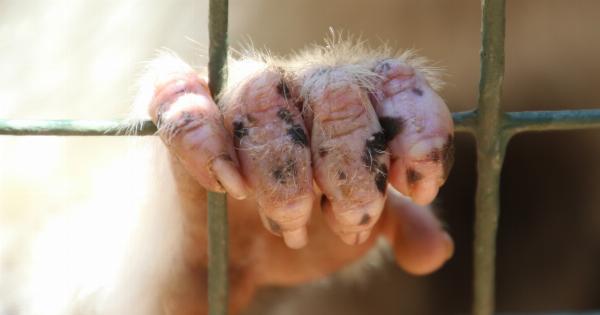Puberty marks the beginning of sexual maturity and is a significant phase of development in both girls and boys.
Traditionally, puberty has been observed to occur during the early teenage years, but recent studies suggest that the onset of puberty is now happening earlier than ever before. Understanding the early onset of puberty in girls and boys is crucial for parents, educators, and health professionals to address concerns and provide appropriate support to adolescents.
This article explores the factors contributing to early puberty and its implications on the physical, psychological, and social aspects of adolescents’ lives.
What is Puberty?
Puberty is a natural biological process that results in physical and sexual maturation. It is triggered by hormonal changes in the body, primarily the production of sex hormones called estrogen and testosterone.
These hormones are responsible for the development of secondary sexual characteristics, such as breast growth in girls and facial hair growth in boys. Additionally, puberty marks the onset of reproductive capabilities.
Typical Age of Onset
Historically, puberty typically began between the ages of 9 and 14 in girls and 10 and 16 in boys.
However, recent studies have indicated a trend towards earlier onset, with girls experiencing puberty as early as 8 years old and boys as early as 9 years old. This shift has raised concerns among researchers and health professionals due to the potential physical, emotional, and social ramifications for adolescents entering puberty at a younger age.
Factors Contributing to Early Puberty
Several factors have been identified as potential contributors to the early onset of puberty in both girls and boys. Genetic factors play a significant role, with research suggesting that early puberty may be inherited.
Additionally, certain environmental factors have been linked to early puberty, including nutritional factors, exposure to endocrine-disrupting chemicals, obesity, and socio-economic status.
Physical Developments in Girls
Early puberty in girls is characterized by the development of secondary sexual characteristics, including breast enlargement, the growth of pubic hair, and the onset of menstruation.
The early onset of menstruation, known as menarche, can have a significant impact on young girls’ emotional and psychological well-being, as they may not be emotionally prepared to handle the physical and emotional changes associated with menstruation.
Psychological and Social Implications for Girls
The early onset of puberty in girls can result in unique psychological challenges. These girls may experience emotional and behavioral issues, such as poor body image, lower self-esteem, increased anxiety, and depression.
Additionally, early-maturing girls may face social difficulties, as their physical development may diverge from their peers, leading to potential social isolation and decreased self-confidence.
Physical Developments in Boys
For boys, early puberty involves the enlargement of the testicles, growth of pubic and facial hair, deepening of the voice, and an increase in muscle mass.
The rapid physical changes boys undergo during puberty can lead to heightened self-awareness and self-consciousness. Furthermore, the pressure to conform to societal expectations of masculinity at a younger age may intensify the psychological challenges faced by early-maturing boys.
Psychological and Social Implications for Boys
The early onset of puberty in boys can have both positive and negative psychological effects. Boys who mature earlier may experience increased confidence, assertiveness, and popularity among their peers.
However, they may also encounter emotional challenges, such as lower self-esteem if they perceive themselves as not living up to societal standards. Furthermore, early-maturing boys face the risk of engaging in risky behaviors to demonstrate their masculinity.
Supporting Adolescents through Early Puberty
There are several ways parents, educators, and health professionals can provide support to adolescents experiencing early puberty:.
- Open communication: Creating a safe and open space for adolescents to discuss their questions, concerns, and experiences is crucial. Encouraging dialogue fosters emotional well-being and helps address any misconceptions or fears.
- Education: Providing comprehensive and age-appropriate information about puberty equips adolescents to navigate physical and emotional changes confidently. This education should include discussions on the menstrual cycle, reproductive health, and healthy coping mechanisms.
- Healthy lifestyle: Encouraging a balanced diet, regular exercise, and adequate sleep promotes overall well-being and can potentially mitigate the physical and emotional challenges associated with early puberty.
- Psychological support: Offering access to counseling services or support groups allows adolescents to process their emotions and develop healthy coping strategies for navigating the challenges of early puberty.
- Social support: Facilitating opportunities for early-maturing adolescents to connect with peers who are experiencing similar journeys can help reduce feelings of isolation and enhance self-acceptance.
- Positive body image: Promoting positive body image through open discussions, media literacy, and self-acceptance techniques helps combat the negative psychological impacts of early puberty.
- Professional guidance: Consulting with healthcare professionals specializing in adolescent health can provide personalized guidance and address any specific concerns associated with early puberty.
Conclusion
The early onset of puberty in girls and boys presents unique physical, psychological, and social challenges.
Understanding the factors contributing to early puberty and seeking appropriate support and guidance is crucial for parents, educators, and health professionals. By fostering open communication, providing education, and offering psychological and social support, we can ensure that adolescents navigate the journey of early puberty with resilience and confidence towards a healthy transition into adulthood.






























